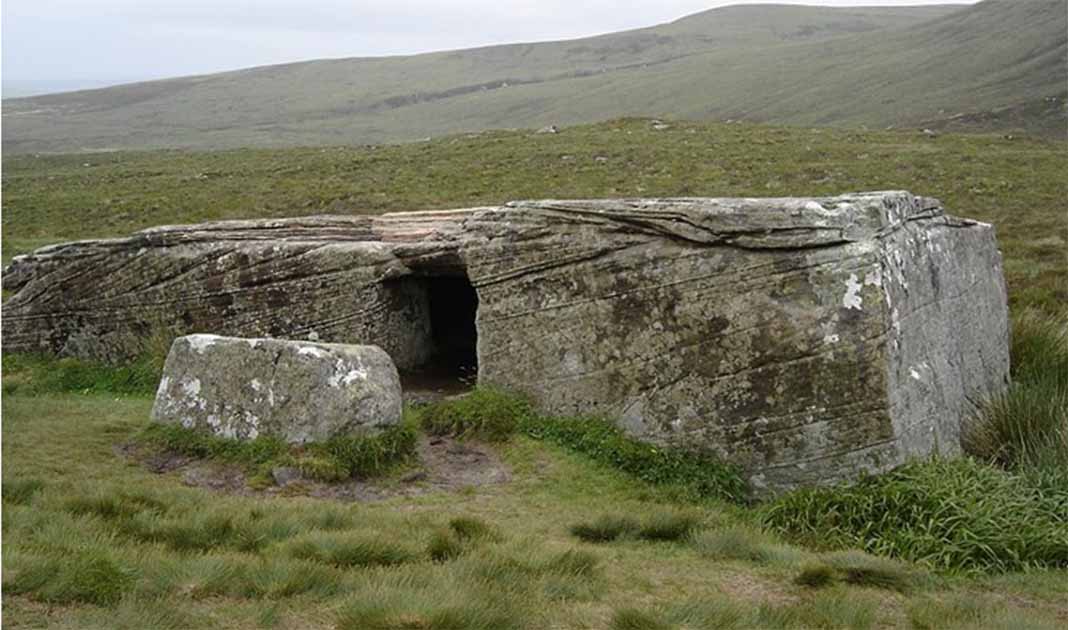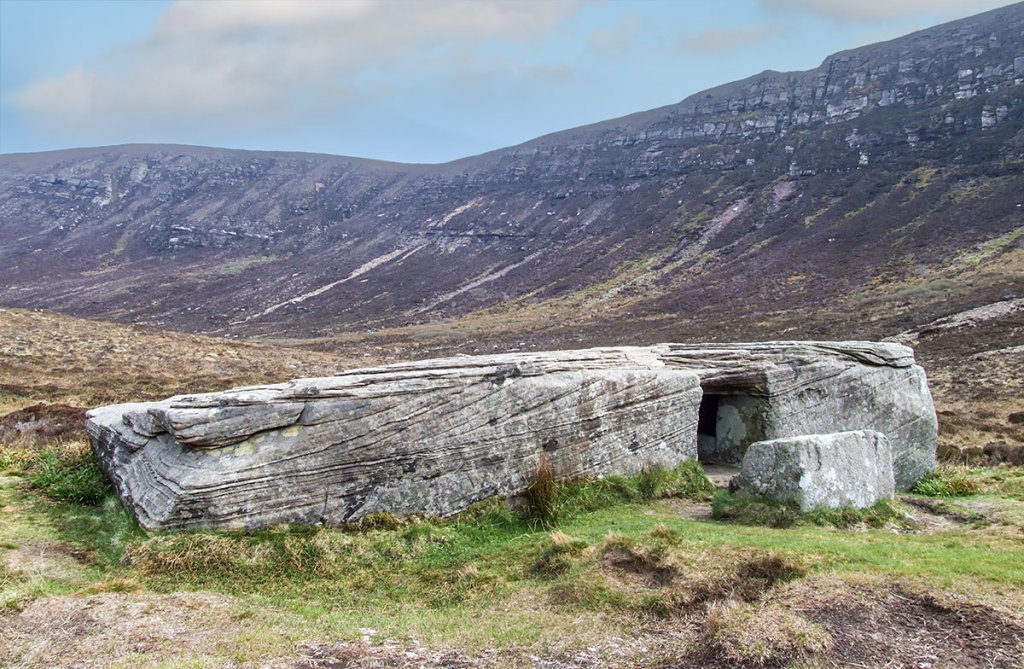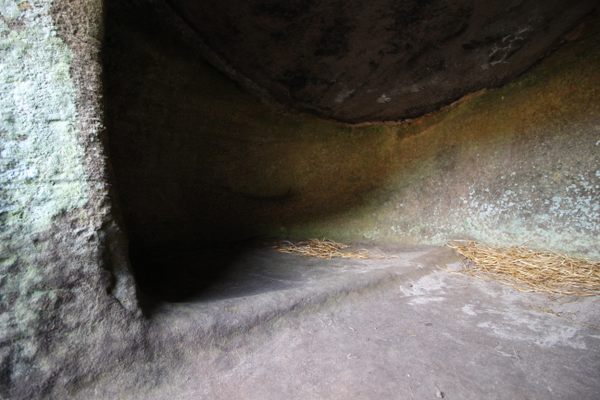Hidden among the rugged landscapes of Hoy, the second-largest island in Orkney, Scotland, the Dwarfie Stane is a 5,000-year-old Neolithic monument that continues to puzzle archaeologists and historians alike. Unlike the elaborate chambered tombs scattered across Orkney, this unique site is Britain’s only known rock-cut tomb, hewn entirely from a single sandstone boulder. But was it truly a tomb, or did it serve another purpose?
A Unique Neolithic Monument
The Dwarfie Stane is an 8.5-meter-long sandstone monolith that has been hollowed out to form a small chambered interior. Inside, two stone-cut cells are connected by a narrow passage, resembling burial chambers found in other Neolithic structures. A large, displaced sandstone slab, originally used to seal the entrance, lies nearby, adding to the site’s mystery.

What makes the Dwarfie Stane exceptional is that it does not follow the typical construction methods of Neolithic tombs in Orkney. Most burial sites from this period, such as Maeshowe and Tomb of the Eagles, were built using stacked stones, but the Dwarfie Stane was cut directly into a massive rock. This uniqueness has led to much debate about its function.
Was It a Tomb, a Hermit’s Retreat, or Something Else?
The prevailing theory suggests that the Dwarfie Stane was a burial tomb, similar in purpose to other Neolithic chambered cairns. However, its isolation and construction method raise questions.

Some researchers believe it may have been used as a hermit’s retreat in later centuries. Others propose a ritualistic or symbolic function, potentially linked to ancient spiritual beliefs. The lack of skeletal remains or grave goods inside the structure leaves its exact purpose open to interpretation.
Legends and Foreign Inscriptions
Adding to its intrigue, local folklore associates the Dwarfie Stane with giants and dwarves, inspiring its name. One story suggests it was the home of a giant who imprisoned a dwarf inside, while another tells of a hermit who sought refuge within its stone walls.

Curiously, an inscription in Persian script, likely carved in the 19th century by an adventurous traveler, is found on the rock’s surface. This suggests that the site has long attracted the curiosity of people from far beyond Scotland.
A Timeless Mystery in the Heart of Orkney
Perched in a remote valley, surrounded by Orkney’s wild and dramatic scenery, the Dwarfie Stane stands as a silent relic of the distant past. With its true origins still uncertain, this ancient monolith remains one of Scotland’s greatest archaeological enigmas, drawing visitors who marvel at its craftsmanship and wonder about the stories it could tell.

